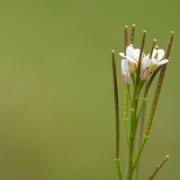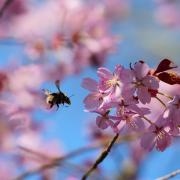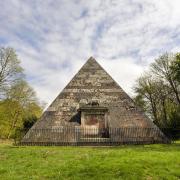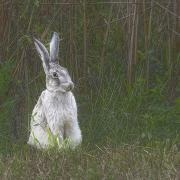From Jane Austen to Beatrix Potter, the beautiful gardens of our literary greats were a source of huge influence and pleasure, writes Rachel Buller.
Writers and poets have long drawn inspiration from the beauty of their surroundings, whether as a setting for their stories or as a place to ignite creativity. Now, a new book, by Norfolk gardening writer Jackie Bennett, explores in more details the relationship between some our most famous wordsmiths and their gardens.
From Jane Austen and Rudyard Kipling to Ted Hughes and Charles Dickens, Jackie visited the gardens of 20 different writers to understand why they played such an important part in their lives.
“I have visited a lot of beautiful gardens but when you go to one where a writer has lived and worked, it gives it a very different dimension and creates a very special atmosphere,” she says.
The Writer’s Garden is in part a biographical study of the writers themselves and in part a journey through their wonderful gardens.
“I absolutely loved discovering more about their lives and how these often very different, gardens fed in to their creativity; how these surroundings influenced what they wrote. One of my favourites was Agatha Christie’s home Greenway, it was very much a surprise to me and very special. We went in the spring and it was magical. Even though it gets so busy, you can still get lost and find yourself alone.”
Another of Jackie’s favourite gardens was Hill Top owned by Beatrix Potter. “I expected it to be a like a theme park if I am honest, but in fact it was really natural and very relaxed. The plants are still ones she chose and the vegetable garden is wonderful. She actually created it after she had written Peter Rabbit, yet when you see it, you can’t believe it wasn’t already there and the inspiration for Mr McGregor’s Garden.”
As well as exploring how a writer’s garden influences the setting for a story, the book also looks at how writers use their gardens as a place to work.
“When Charles Dickens was writing at Gad’s Hill Place, he describes how he would write on the top floor of his writing hut so he could see the tops of the trees and his joy at those views. Yet from there, he was writing some of his darkest books, A Tale of Two Cities and Great Expectations.
“Roald Dahl had a shed in the garden at Gipsy House but he always worked with the curtains closed. He was a very keen and knowledgeable gardener but he wanted to shut out the outside world when he wrote. Letters from him talk about the hearing the cows outside chewing on the curtains.”
Jackie, who has lived in west Norfolk since she was a teenager, is a keen gardener and says there is one famous author’s garden which she would love to see – Daphne du Maurier’s inspiration for Manderley.
“I think in many ways my book was inspired by a passage in the opening of Rebecca. When she writes about the heroine going up the drive and seeing Manderley for the fist time, she uses the most vivid descriptions of blood red rhododendrons. When you read it, you can’t believe Daphne Du Maurier didn’t live and breathe those rhododendrons and that they don’t exist. It feels so real. Sadly I couldn’t get access to those gardens for this book, perhaps for the next one.”
The Writer’s Garden, by Jackie Bennett, £25 (Frances Lincoln).



























